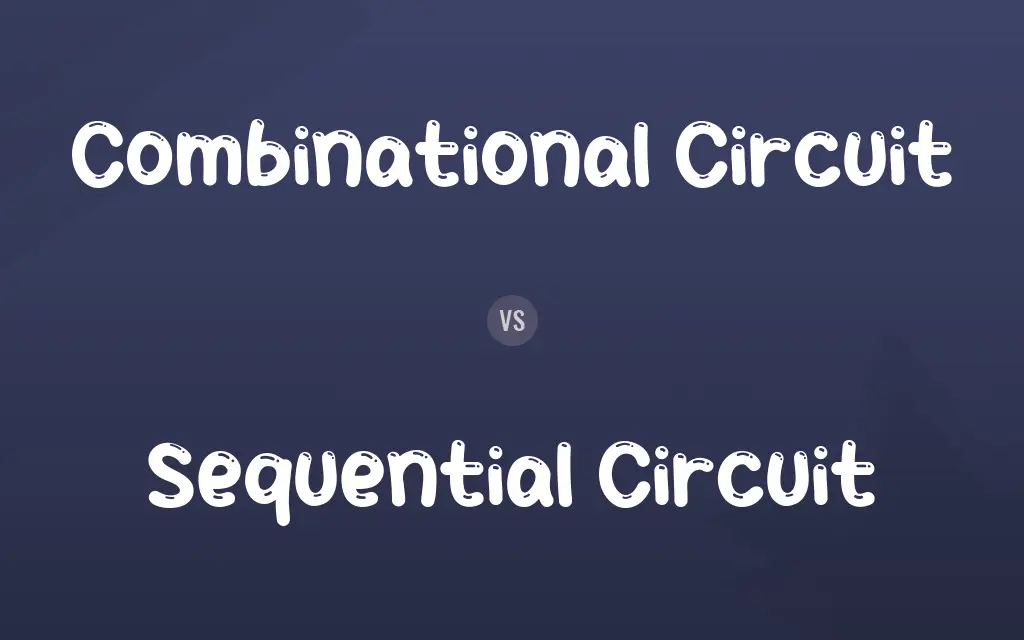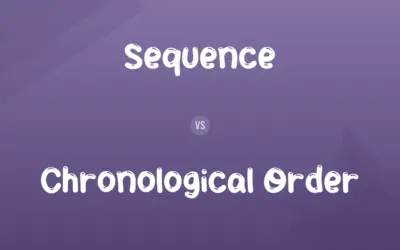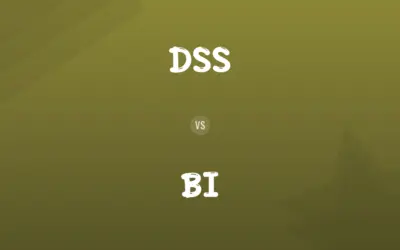Combinational Circuit vs. Sequential Circuit: Difference and Comparison
Edited by Muazma Batool — By Muneeza Rehman — Published on October 31, 2023
A combinational circuit gives an immediate output based solely on its input values, while a sequential circuit's output depends on both current input and previous inputs (history).

Difference Between Combinational Circuit and Sequential Circuit
Combinational circuits and sequential circuits are fundamental concepts in digital logic design, each serving unique purposes. A combinational circuit is defined by its nature of producing an output that solely depends on its current inputs. That is, for a given set of inputs, the output is determined instantly, without any reference to previous inputs. Examples of combinational circuits include basic logic gates like AND, OR, NOT, and more complex ones like multiplexers and decoders. These circuits do not have any memory elements, meaning they do not retain past input or output information.
Muneeza Rehman
Oct 31, 2023
Sequential circuits, on the other hand, produce an output based on not just the current inputs but also on past inputs. This is because they possess memory elements, like flip-flops, which can store data. This characteristic allows sequential circuits to "remember" previous states, thereby making them suitable for applications requiring storage or processes that evolve over time. Counters and registers are classic examples of sequential circuits. The presence of memory elements means that the output at any given time is a combination of the current input and the stored state.
Muazma Batool
Oct 31, 2023
An essential distinction between combinational circuit and sequential circuit lies in their design and operation. In a combinational circuit, logic gates are interconnected in such a way that the system settles to a stable output once inputs are applied. In contrast, a sequential circuit often employs feedback, where outputs are looped back as inputs. This feedback mechanism, combined with memory elements, gives sequential circuits their characteristic behavior.
Muneeza Rehman
Oct 31, 2023
Another distinguishing feature is the timing aspect. Combinational circuits react almost instantaneously to changes in input, reflecting the new state in their output immediately. Sequential circuits, due to their reliance on both current and past states, often require clock signals to synchronize and manage the transitions between states. This clocked operation ensures that the memory elements update and provide output at specific intervals, governed by the clock's frequency.
Leo
Oct 31, 2023
In practical applications, digital systems often employ a mix of both combinational and sequential circuits. While combinational circuits handle arithmetic and logical operations, sequential circuits manage storage, sequencing, and time-based tasks.
Jonathan
Oct 31, 2023
Combinational Circuit vs. Sequential Circuit Comparison Chart
Definition
Output based solely on current inputs
Output based on current and past inputs
Muneeza Rehman
Oct 31, 2023
Dependency on Clock Signal
Typically not required
Often requires a clock signal for synchronized operation
Muneeza Rehman
Oct 31, 2023
Combinational Circuit vs. Sequential Circuit Definitions
◉Combinational Circuit
Circuit that instantly gives an output for given inputs.
The combinational circuit in a calculator processes arithmetic immediately upon input.
Muneeza Rehman
Sep 26, 2023
◉Sequential Circuit
Circuit type containing memory elements.
Registers in a computer's CPU are sequential circuits storing data for processing.
Muazma Batool
Sep 26, 2023
◉Combinational Circuit
Digital component where output doesn't depend on previous states.
Multiplexers, functioning as digital switchboards, are combinational circuits.
Lucas
Sep 26, 2023
◉Sequential Circuit
Logic system that involves feedback and storage mechanisms.
Counters used in digital systems are sequential circuits that tally up inputs over time.
Levi
Sep 26, 2023
◉Combinational Circuit
A type of circuit without memory elements.
A decoder is a combinational circuit that translates binary input into a specific output.
Muazma Batool
Sep 26, 2023
◉Sequential Circuit
A circuit that can "remember" past inputs due to its inherent storage capability.
The sequential circuit in a traffic light system ensures the proper order of light changes.
Muneeza Rehman
Sep 26, 2023
◉Combinational Circuit
Logic system with a direct relationship between input and output.
The seven-segment display driver is a combinational circuit translating binary numbers to display patterns.
Muneeza Rehman
Sep 26, 2023
◉Sequential Circuit
A digital circuit whose output is determined by current inputs and previous states.
A digital clock uses a sequential circuit to progress from one second to the next.
Muneeza Rehman
Sep 26, 2023
◉Combinational Circuit
A digital circuit whose output is solely determined by its current inputs.
The basic logic gates in a computer are types of combinational circuits.
Muneeza Rehman
Sep 26, 2023
◉Sequential Circuit
Digital component where output is a combination of input and stored history.
Flip-flops, fundamental building blocks, are foundational sequential circuits in many digital designs.
Jonathan
Sep 26, 2023
Combinational Circuit vs. Sequential Circuit Frequently Asked Questions
What is the primary function of a combinational circuit?
A combinational circuit processes input data and provides an immediate output based solely on those inputs.
Muneeza Rehman
Oct 31, 2023
How do sequential circuits retain past information?
Sequential circuits contain memory elements like flip-flops which store previous states.
Muazma Batool
Oct 31, 2023
What role does a clock signal play in sequential circuits?
Clock signals synchronize and manage state transitions in sequential circuits.
Lucas
Oct 31, 2023
Can a digital system have both combinational and sequential circuits?
Yes many digital systems are a hybrid, leveraging both for varied tasks.
Muneeza Rehman
Oct 31, 2023
Why don't combinational circuits require memory?
Their outputs depend only on real-time inputs, negating the need for past data storage.
Muneeza Rehman
Oct 31, 2023
Content Creators
Written by
Muneeza RehmanAt Comparisons.wiki, Muneeza skillfully navigates the vast sea of information, ensuring clarity and accuracy as the lead content editor. With a keen eye for detail, she curates every comparison to enlighten and engage readers.
Edited by
Muazma BatoolAs a content editor, Muazma Batool is not just a grammar guru but a creative mastermind who breathes life into every word. With an eagle eye for detail and a passion for storytelling, she transforms bland text into engaging content that captivates audiences and drives results.































